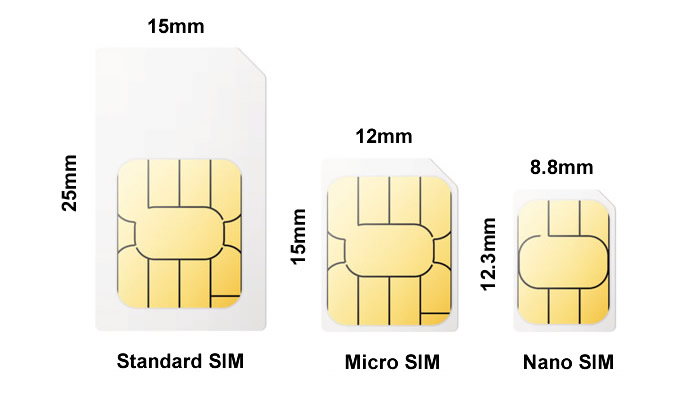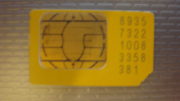Here’s another bit of technology that you use literally every day. (And I mean literally, not “literally” the way that people use the word today.) Inside your phone is a Subscriber Identity Module. You call it a SIM card. It’s not the brains of your phone, as many people tend to think. It’s more like… your phone’s driver’s license or state ID.
The history of the SIM card
SIM cards are referred to as a “smart card” technology. This puts them in the same category as most of your credit cards, your ATM card, and the access card in your satellite receiver. The term “smart card” came to prominence in the 1980s. I’ll be honest, “smart cards” aren’t that smart. What they are is a computer chip and a very small bit of flash memory. And I mean a VERY small bit. Like enough for a couple of numbers and that’s it.
SIM cards were designed in the early days of the cell phone. The first ones hit the market in 1991. In countries where there is only one cellular standard, the SIM card makes it easy to put your phone number into any phone. Open up the phone, slide in the card, and that’s it. Automatically it’s your phone. At least that was the original idea.
The gold design you see on any smart card (including a SIM card) is just a flat version of an electronic connector. It has large contact areas to make it easy for the card to be read in a variety of machines. The actual smart bit is barely larger than the head of a pin.
SIM cards today
The original SIM cards were credit card sized. That didn’t last long, and the “Mini-SIM” became the standard for cell phones pretty quicky. A Mini-SIM is still pretty big, about the size of your thumbnail. That wasn’t a problem, because the phones were huge too. But, as phones got smaller and space-saving became more important, the same card shed a little bit of its size to become the “Micro-SIM” used in many phones in the 2000s. The picture at the top of the article shows a Mini-SIM with a punch-out to make it a Micro-SIM.

That still wasn’t small enough. Starting with the iPhone 4 and its contemporaries, we started seeing the “Nano-SIM” which was barely large enough to hold the gold contacts. That’s the SIM that most devices use today.
How a SIM card works
SIM Cards could be doing more for us than they do, but there’s no reason for it. Let me explain.
What a SIM card actually does
The SIM card holds the information that the cell company needs in order to know who you are. This is in the form of an ICCID, which is a long identification number that your cell company associates with your phone number. That, combined with another number called the IMEI, identifies your phone distinctly from the millions (billions?) of other phones in the cellular network.
Storing and providing the ICCID is the SIM’s main function, and because the ICCID is stored on the SIM, you can take the SIM and put it in any other device where it fits. When the cell network looks for the ICCID, it will register the IMEI in that other phone and you’ll be able to make and take calls.
ICCIDs are tied to cell networks, so if you take your AT&T SIM out of one device and put it in another device, it will still work only on AT&T. You can put another SIM from another carrier in your phone, and as long as the phone is unlocked, the phone will start working with that carrier.
What a SIM card could do
SIM cards were designed in the days before smartphones. So, they have the ability to run simple apps and store phone numbers. But in practice they don’t actually do these things. The tiny amount of logic in a SIM card pales in comparison to the processing power of your phone. Plus, at this point in time all your contacts are stored in the cloud. Those “fancy” extra SIM features just aren’t as fancy as the features in your phone.
Will SIM cards go away?
As tiny as SIM cards are, they still take up space in your phone. Apple and other high-end manufacturers are moving to “e-SIM” which is a technology where the very same SIM chip is just on the phone’s main board. This saves space. Smartphones are smart enough to get activation over the internet using Wi-Fi, and the e-SIM can be programmed that way. The only downside is that you can’t take your SIM from phone to phone, or change SIMs to change cell networks. Changing carriers is a bit more common in other countries than it is here.





